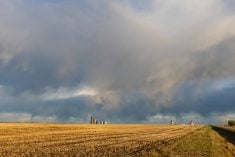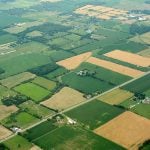MarketsFarm — Spring flooding in Manitoba’s Red River Valley could approach levels last seen in 2009, the highest water level since 1997’s “Flood of the Century,” according to the latest update from the provincial Hydrologic Forecast Centre.
The centre is monitoring a precipitation system forecast for the April 29-May 1 weekend that is expected to bring 30 to 80 millimetres of rain to southern and central Manitoba basins including the U.S. portions of the Red and Souris river basins.
This is a dynamic system and the amounts and location of precipitation could shift as the system moves into Manitoba, the province said.
Read Also

Saskatchewan Crop Report: Harvest nears completion
Saskatchewan’s harvest was 98 per cent complete as of Oct. 13 before rain and snow fell onto some regions.
Depending on the amount of precipitation received, levels along the Red River between Emerson and the Red River Floodway inlet south of Winnipeg could be similar to those observed in spring flooding in 2009. Forecasters will continue monitoring the system and issue updates as more information is known, the province said.
Flood warnings and watches have been issued for portions of southern and central Manitoba due to the risk of overland flooding in these areas as the result of the forecast rain. Most ditches and waterways are either full or near their capacity. Heavy rain occurring in a short period in saturated soils could create overland flooding.
Water levels on the Red, Assiniboine and many other rivers are increasing. The rate of increase in the Red River basin and streams in south-central Manitoba has slowed when compared to the rapid water level rise seen at many locations earlier in the week. Rivers and tributaries in areas that still have snow accumulations should expect rapid increases in water levels as runoff from snowmelt picks up. This weekend’s precipitation will cause further water level increases, the province said.
The Red River Floodway around Winnipeg, and the Portage Diversion, a channel diverting water from the Assiniboine River into Lake Manitoba, continue to operate to lower water levels within Winnipeg, the province said.
Provincial crews are deployed to a number of communities in the Red River Valley running pumping operations, as well as preparing for and implementing dike closures, as required.
Crews are closely monitoring river levels at the town of Morris and have been working to keep Highway 75 open as long as possible. However, rising water levels mean that Highway 75 north of Morris — about 50 km south of Winnipeg — is expected to be closed Friday.
Traffic from Highway 75 — the main truck route for cross-border traffic out of Winnipeg via Emerson — will be detoured onto Provincial Road (PR) 205 at Aubigny, along PR 246 to Highway 23 at Morris, and back onto Highway 75 south of Morris, the province said.
Rising waters may necessitate dike or highway closures at some locations, the province said, and Manitobans are reminded to stay off closed roads and to not attempt to travel across inundated roads.
Up-to-date information on highway conditions, including detours and road closures, is available online or by calling 511. Manitobans should also stay off waterways including creeks, streams, rivers and the floodway. High flows, debris and cold temperatures present a significant safety risk, the province said.
Further west, Saskatchewan’s Water Security Agency (WSA) on Wednesday advised of “potential” for overland flooding in the extreme southeast corner of the province late this week and into the following week.
Two late winter snowfall events brought significant moisture to that area over the past couple of weeks, the WSA said. Warmer temperatures and rainfall now forecast for the area may lead to a rapid melt of that snowpack, in turn leading to high flows and localized overland flooding.
The area of concern in Saskatchewan extends from Highway 1 south to the U.S. border and from Highway 47 east to the Manitoba border, including Pipestone Creek, Moose Mountain Creek, Short Creek and the Antler River and its tributaries including Gainsborough, Lightning, Jackson and Graham creeks.










